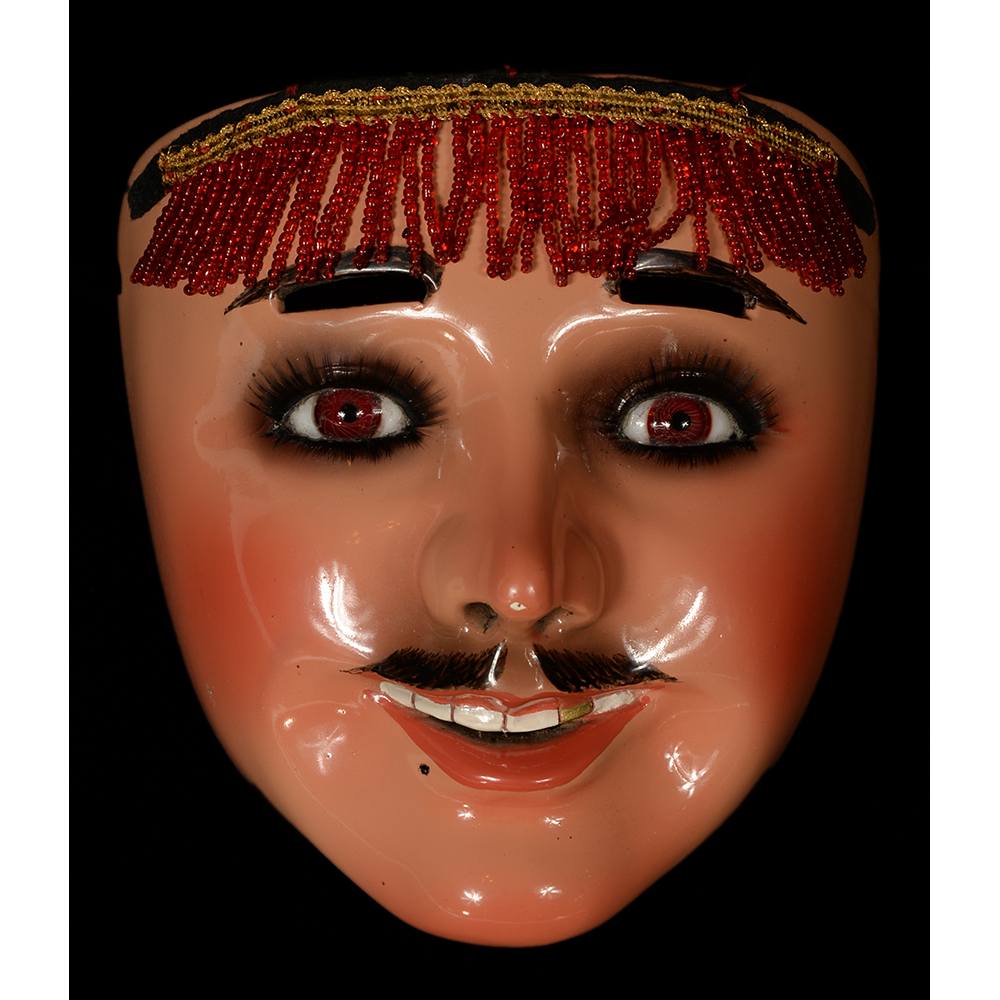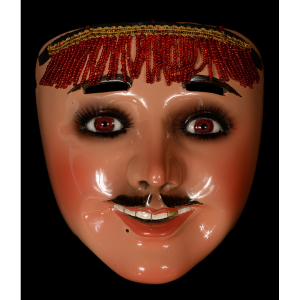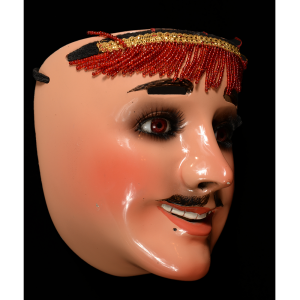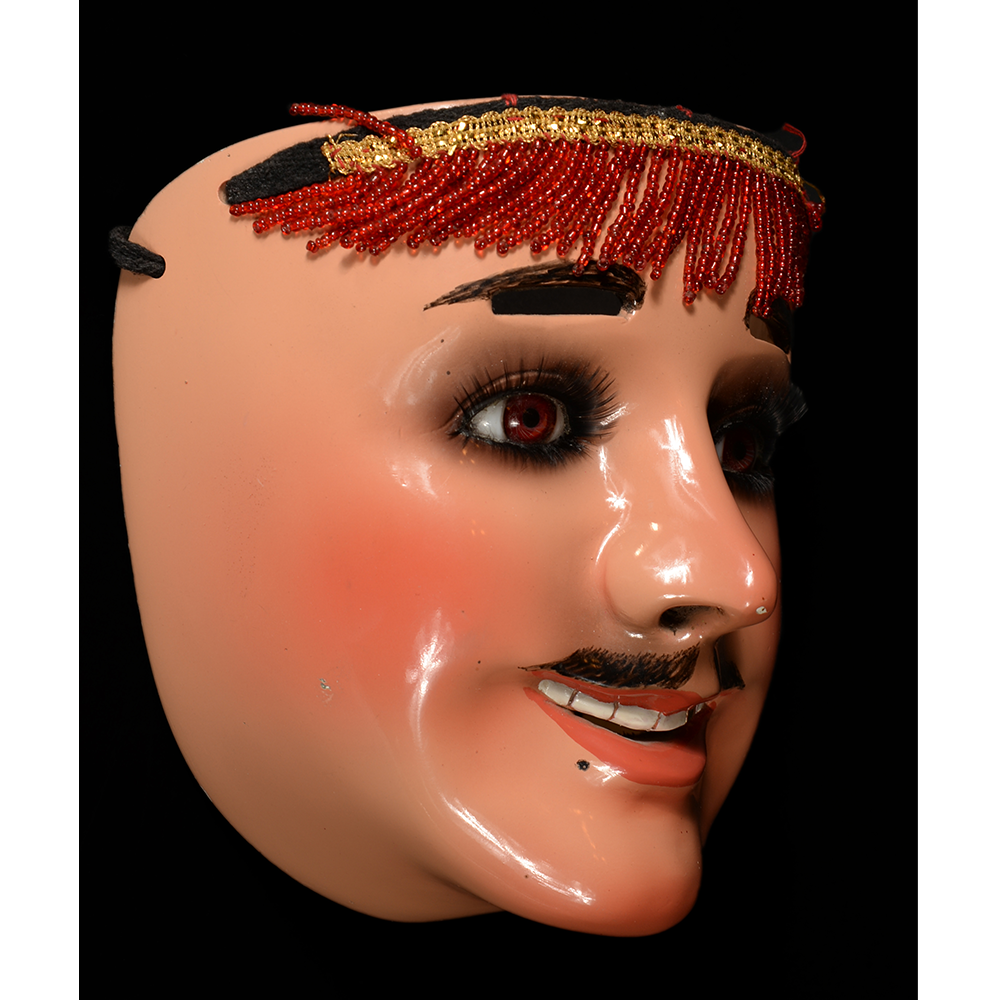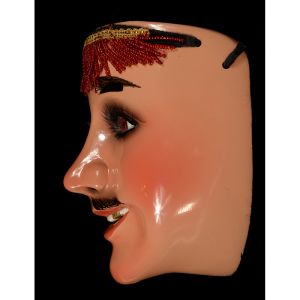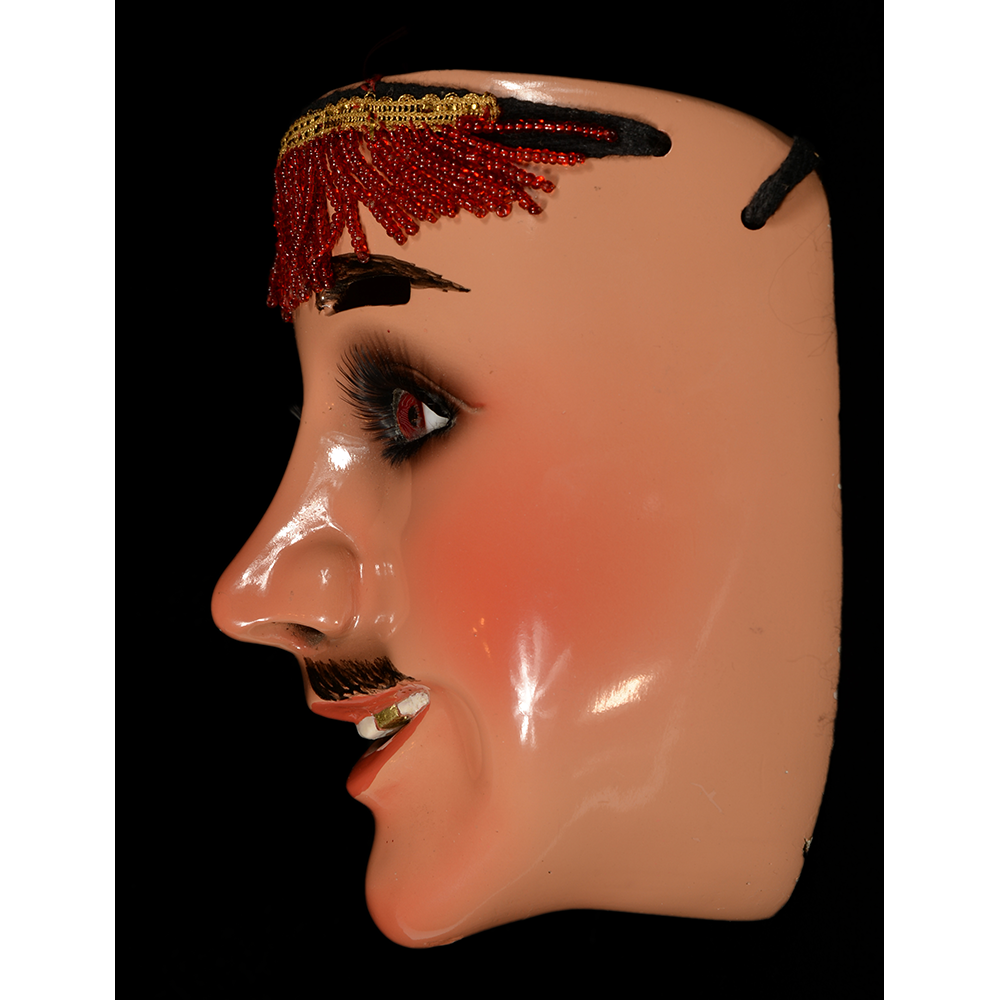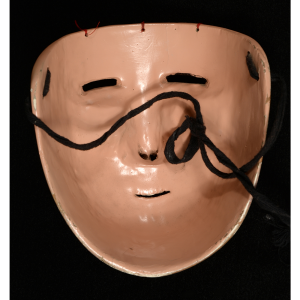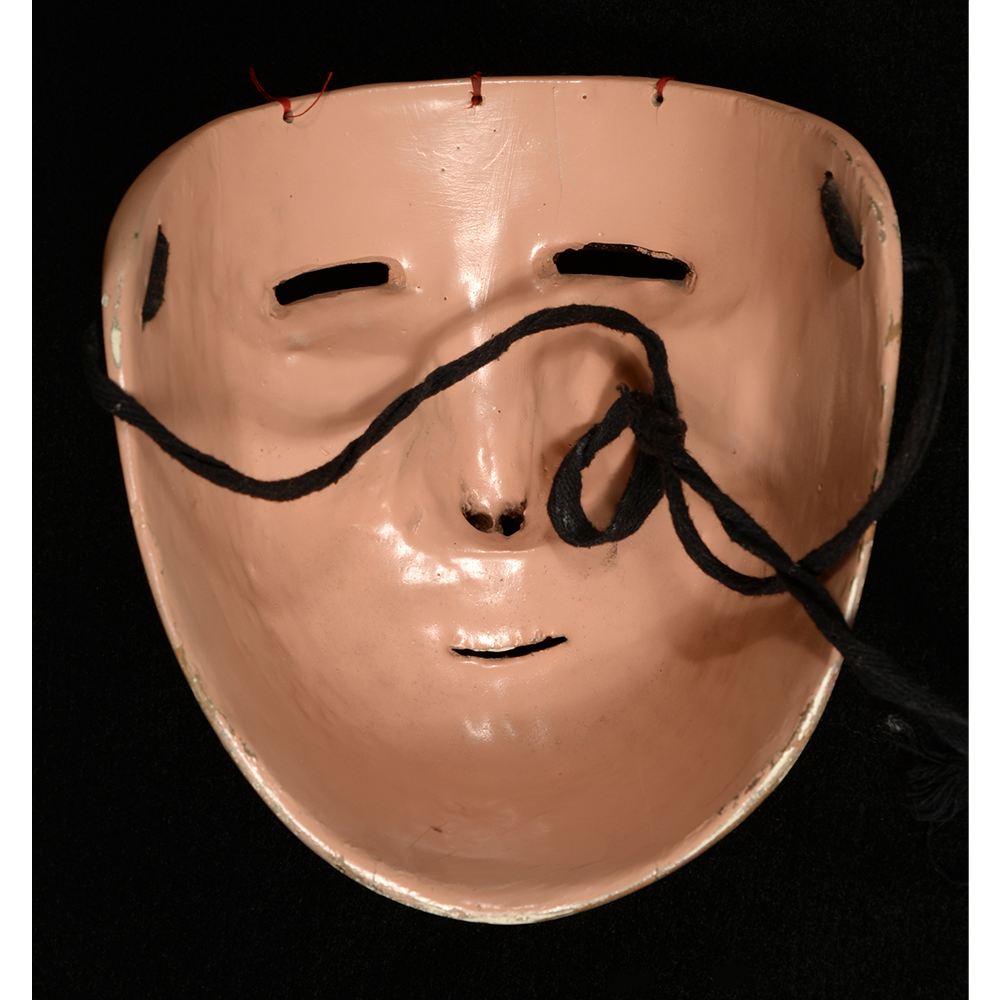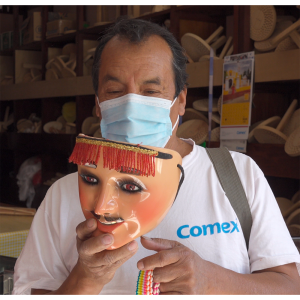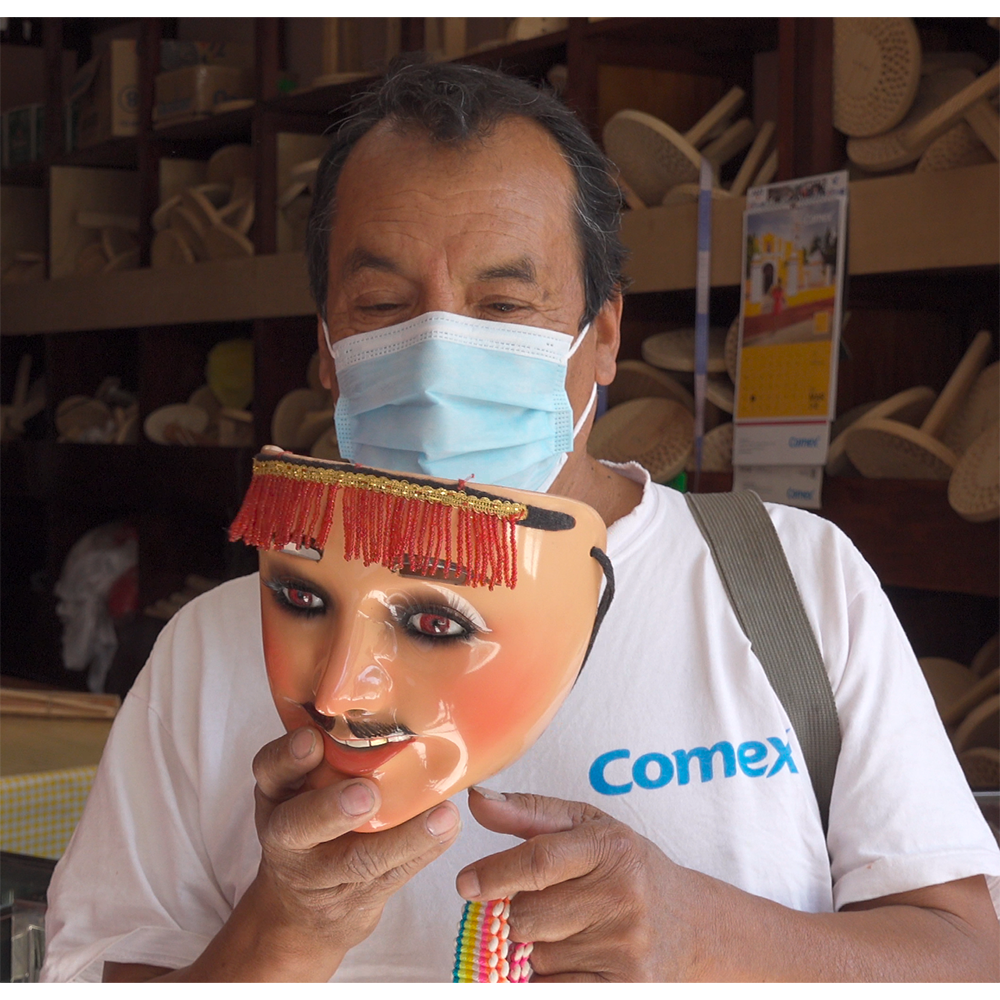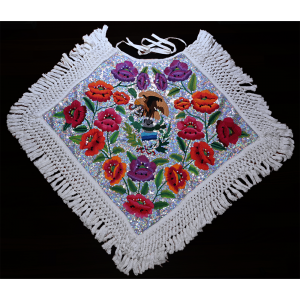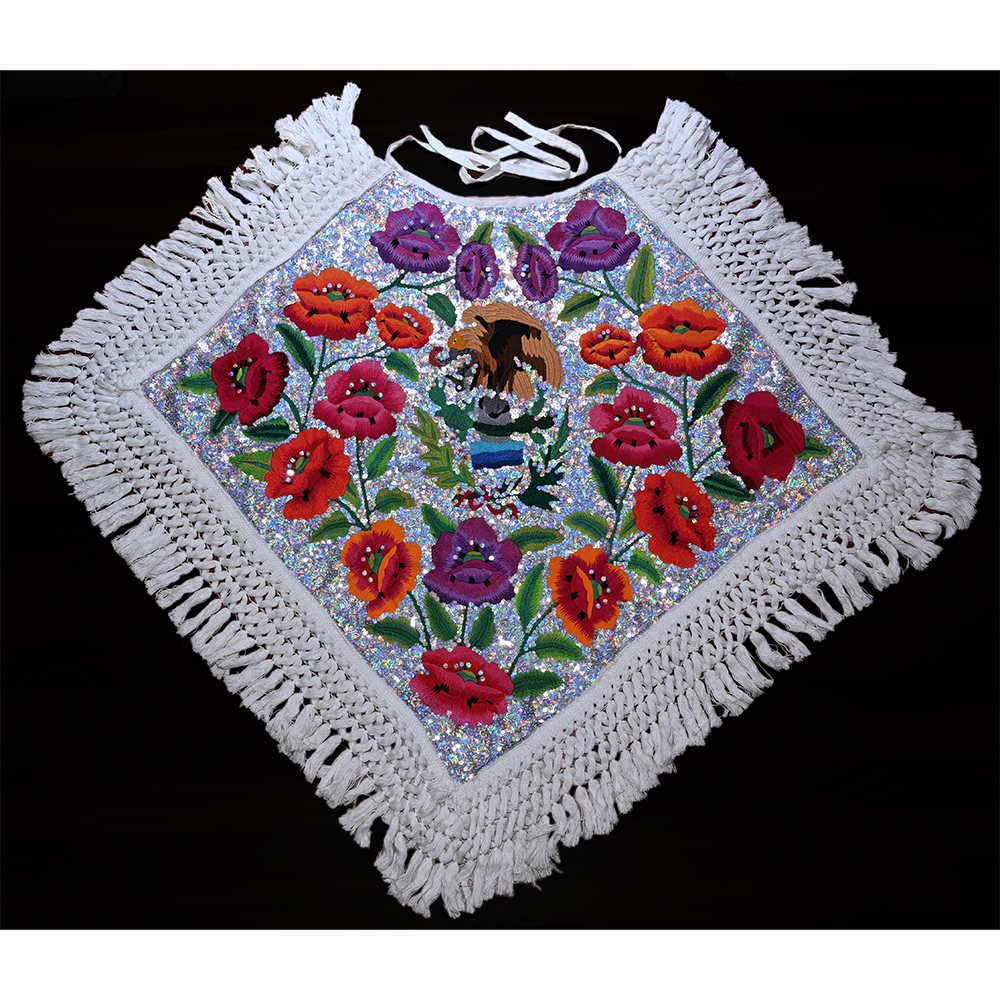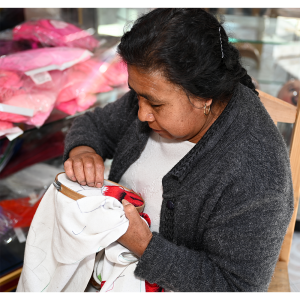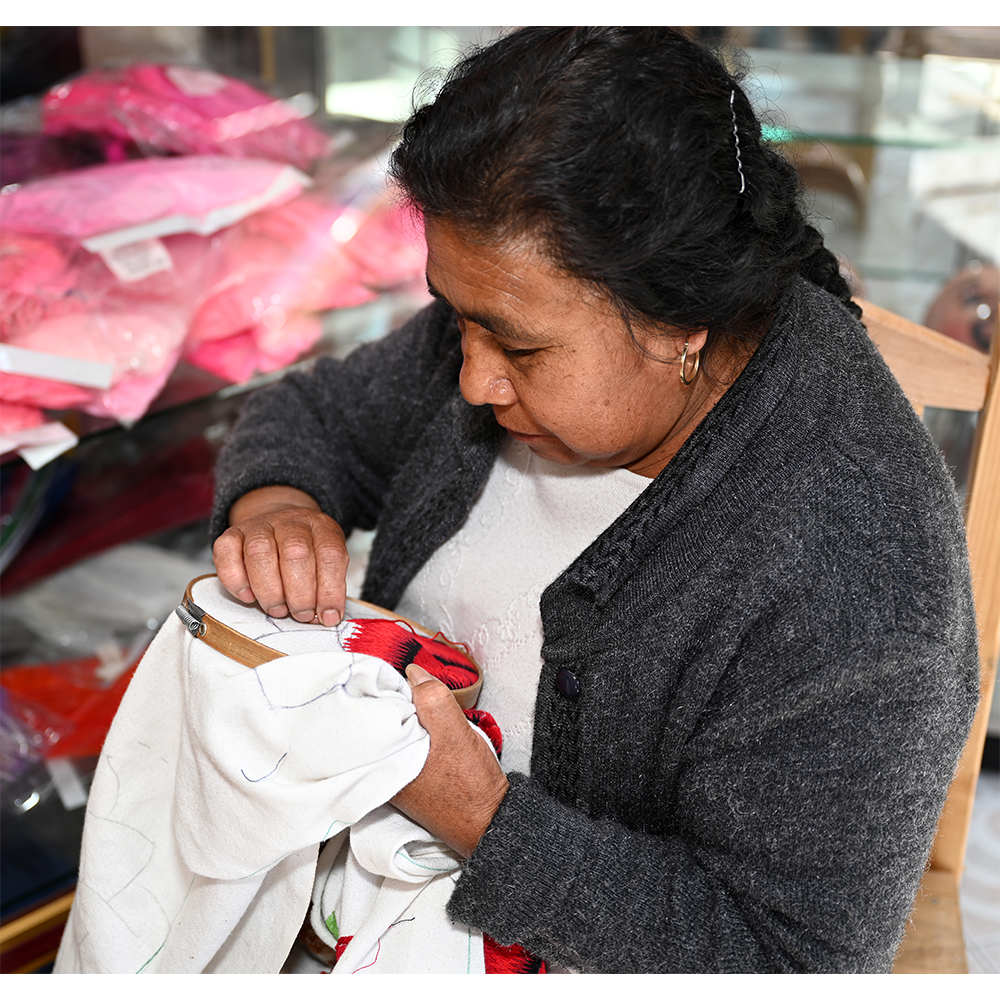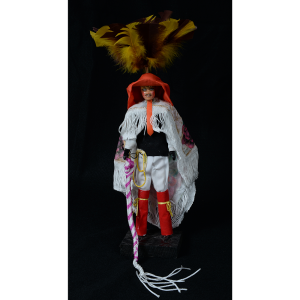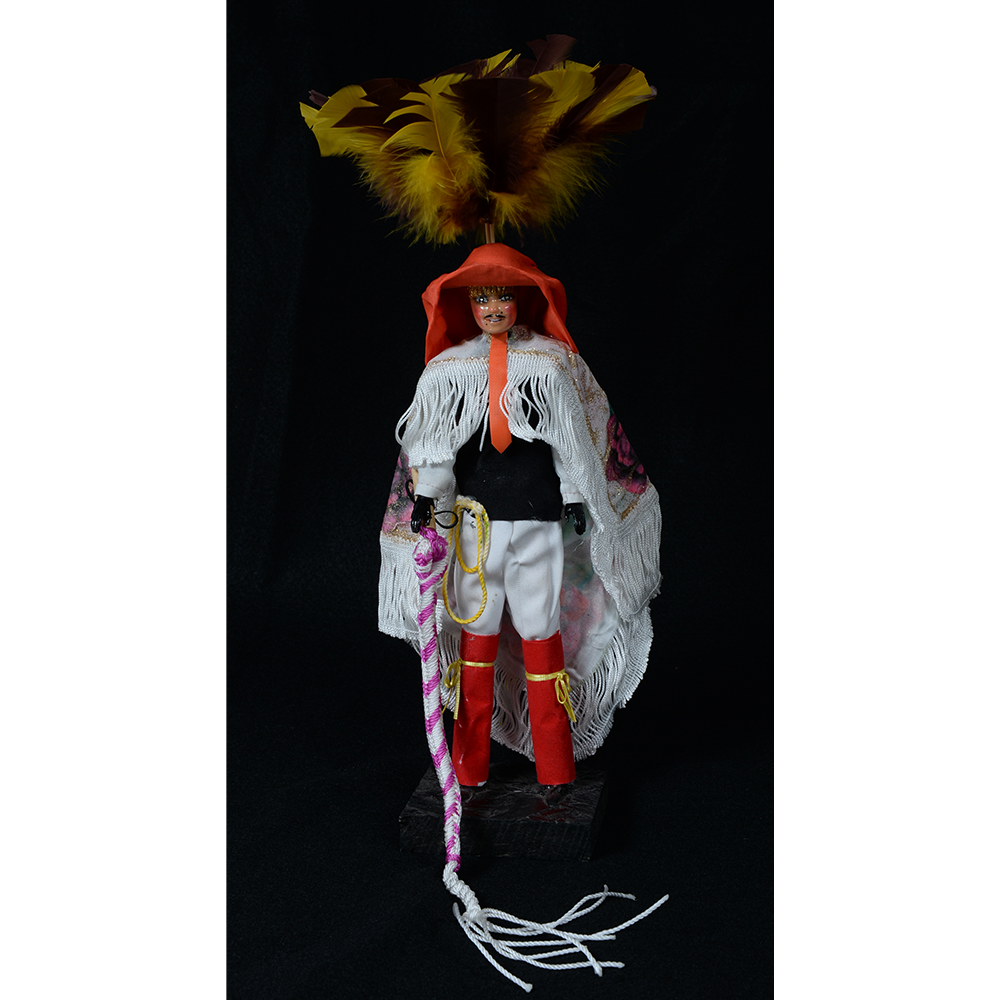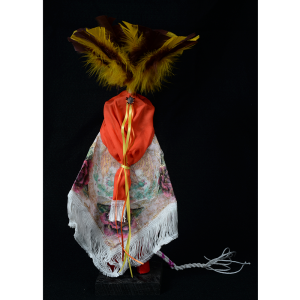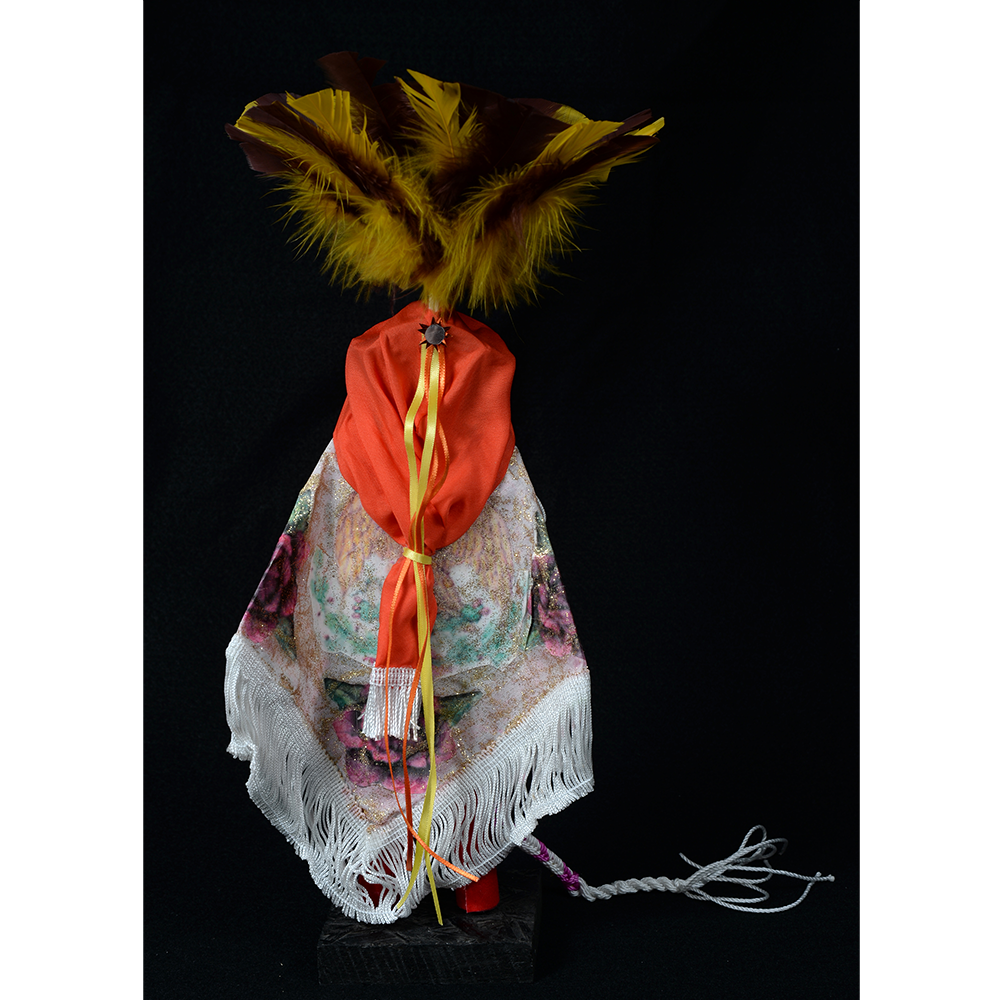TITLE: Charro Mask and Cape
TYPE: face mask; costume
GENERAL REGION: Latin America
COUNTRY: Mexico
SUBREGION: Tlaxcala
ETHNICITY: Nahua
DESCRIPTION: Charro (Cowboy) mask with embroidered cape
CATALOG ID: LAMX140
MAKER (Mask): Constantino Torres Pérez (1956- , Papalotla, Tlaxcala)
MAKER (Cape): Francisca Lara Guerrero (1936- , Papalotla, Tlaxcala)
CEREMONY: Carnival
AGE (Mask): 2017
AGE (Cape): 2015
MAIN MATERIAL (Mask): wood
OTHER MATERIALS (Mask): resin; oil-based paint; glass eyes; cattle hair eyelashes; gold foil; cotton string; plastic beads; cotton straps
MATERIALS (Cape): cotton granité cloth; cotton skein yarn; cotton thread; sequins
Carnival in Tlaxcala, Mexico has traditions quite different from those in other parts of the country. In the town of Papalotla, Tlaxcala, men dress in elaborate costumes with broad feathered hats and detailed capes to perform a dance called El Pedimento del Agua (The Petition for Water). The costume for the dance, probably originating as a Chichimeca rain dance, is elaborately symbolic. The feathers symbolize clouds, the band around the head the sky, a beribboned mirror behind the head (the rocetón) symbolizes the moon and stars with a rainbow, and the leg coverings symbolize the home, or protection. On the cape, the sequins symbolize rain and the cotton braids symbolize snow. The design includes roses, which evoke nature, and the Mexican eagle. In addition, the charro dancers carry a braided whip called a cuarta, traditionally made of ixtle fiber, which symbolizes both thunder (noise of the whip cracking) and the chirrionera, a coachwhip snake, which according to local myths represents a woman converted into a serpent by a curse.
The mask of the charro is similar to the catrín mask used in other parts of Tlaxcala and, like them, ridicules the gentrified Spanish colonizers, with beauty marks and a gold tooth.
In the dance, dancers are orgnized into two structures, an exterior and an interior. The exterior is composed entirely of charros. The inner structure revolves around a female figure, the Nana (a man dressed as a women, with a female mask), who is surrounded by young female dancers (doncellas) and male dancers in simpler suits known as vasarios.
This mask was danced by its maker from 2017 until 2020. The cape was hand sewn in 2015 and rented out by the Taller Silver Star to be danced in the Carnival of Papalotla until 2020.
A brief documentary about Carnival in the state of Tlaxcala, Mexico.
